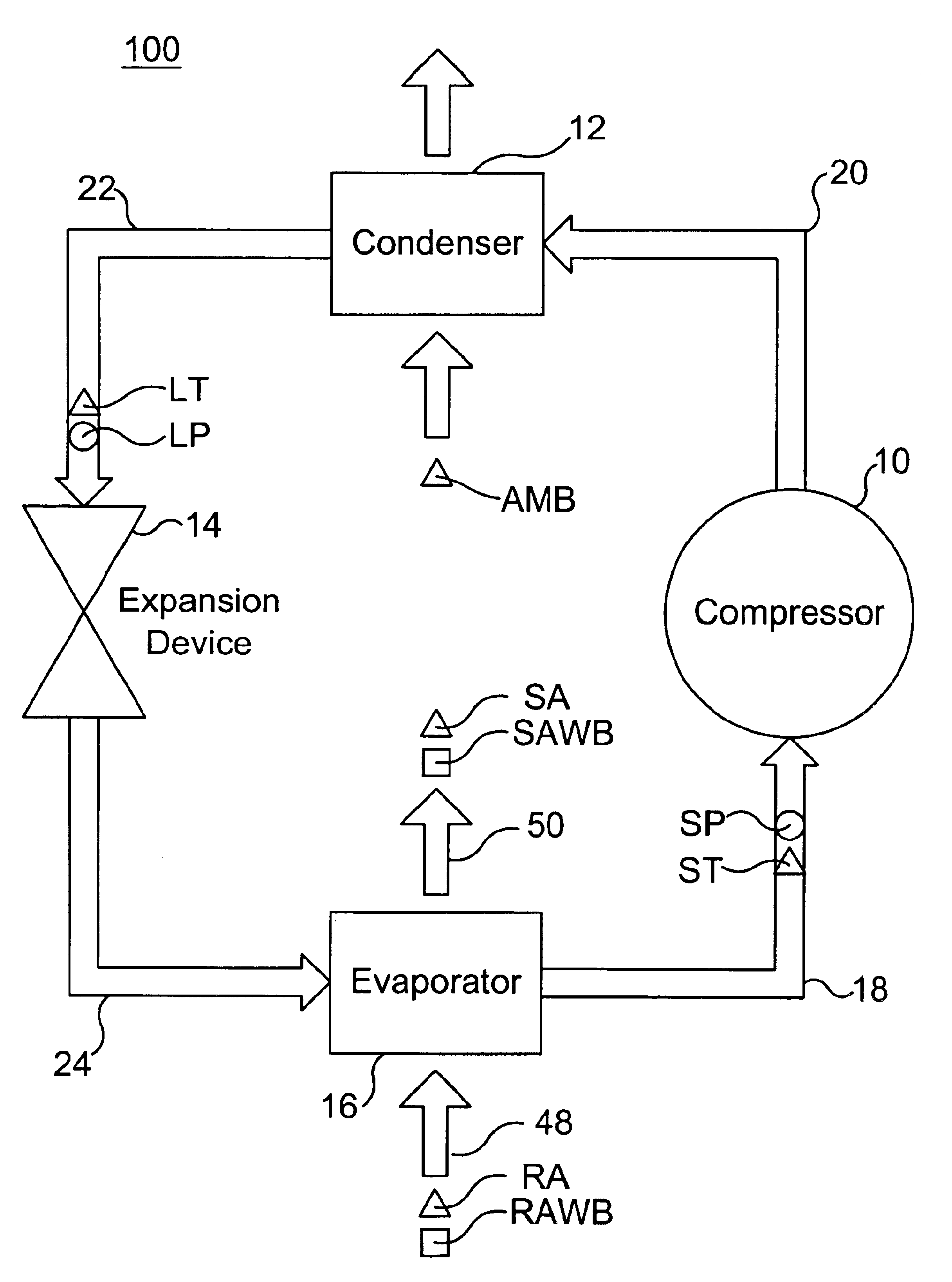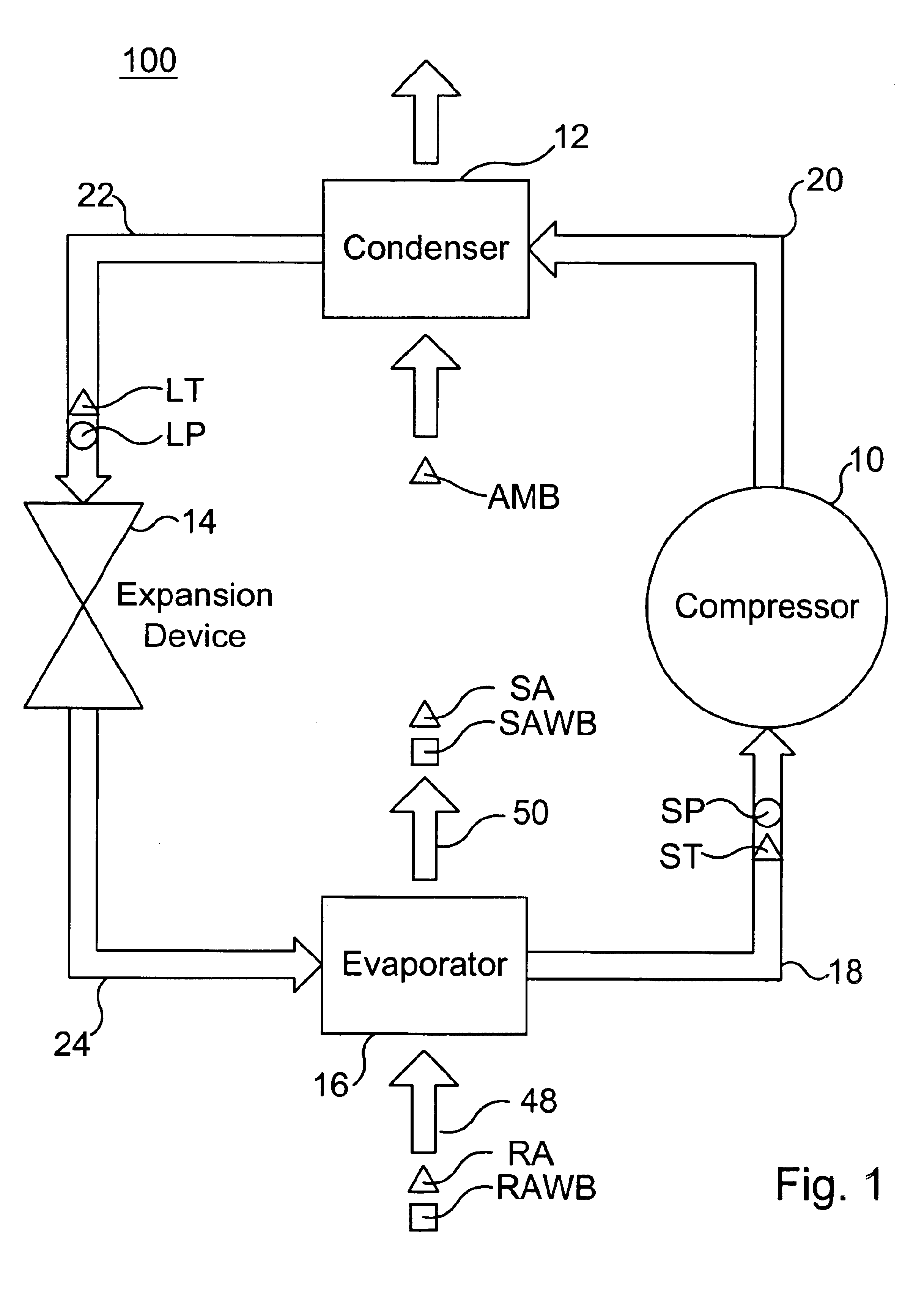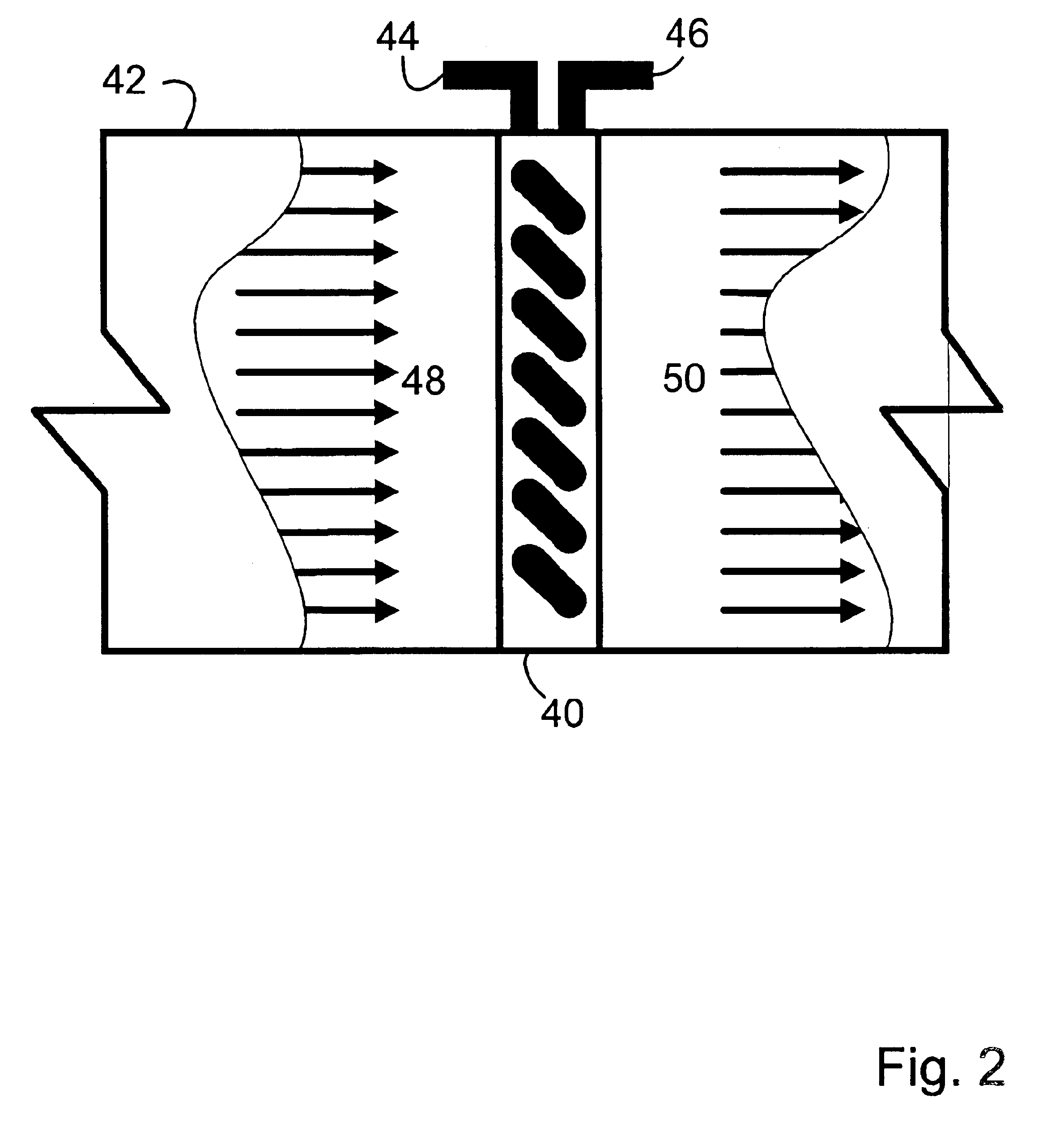Estimating evaporator airflow in vapor compression cycle cooling equipment
- Summary
- Abstract
- Description
- Claims
- Application Information
AI Technical Summary
Benefits of technology
Problems solved by technology
Method used
Image
Examples
Embodiment Construction
[0016]In describing preferred embodiments of the invention, specific terminology has been selected for clarity. However, the invention is not intended to be limited to the specific terms so selected, and it is to be understood that each specific term includes all technical equivalents that operate in a similar manner to accomplish a similar purpose.
[0017]The vapor compression cycle is the principle upon which conventional air conditioning systems, heat pumps, and refrigeration systems are able to cool (or heat, for heat pumps) and dehumidify air in a defined volume (e.g., a living space, an interior of a vehicle, a freezer, etc.).
[0018]The vapor-compression cycle is made possible because the refrigerant is a fluid that exhibits specific properties when it is placed under varying pressures and temperatures.
[0019]A typical vapor compression cycle system 100 is illustrated in FIG. 1. The system is a closed loop system and includes a compressor 10, a condenser 12, an expansion device 14...
PUM
 Login to View More
Login to View More Abstract
Description
Claims
Application Information
 Login to View More
Login to View More - R&D
- Intellectual Property
- Life Sciences
- Materials
- Tech Scout
- Unparalleled Data Quality
- Higher Quality Content
- 60% Fewer Hallucinations
Browse by: Latest US Patents, China's latest patents, Technical Efficacy Thesaurus, Application Domain, Technology Topic, Popular Technical Reports.
© 2025 PatSnap. All rights reserved.Legal|Privacy policy|Modern Slavery Act Transparency Statement|Sitemap|About US| Contact US: help@patsnap.com



